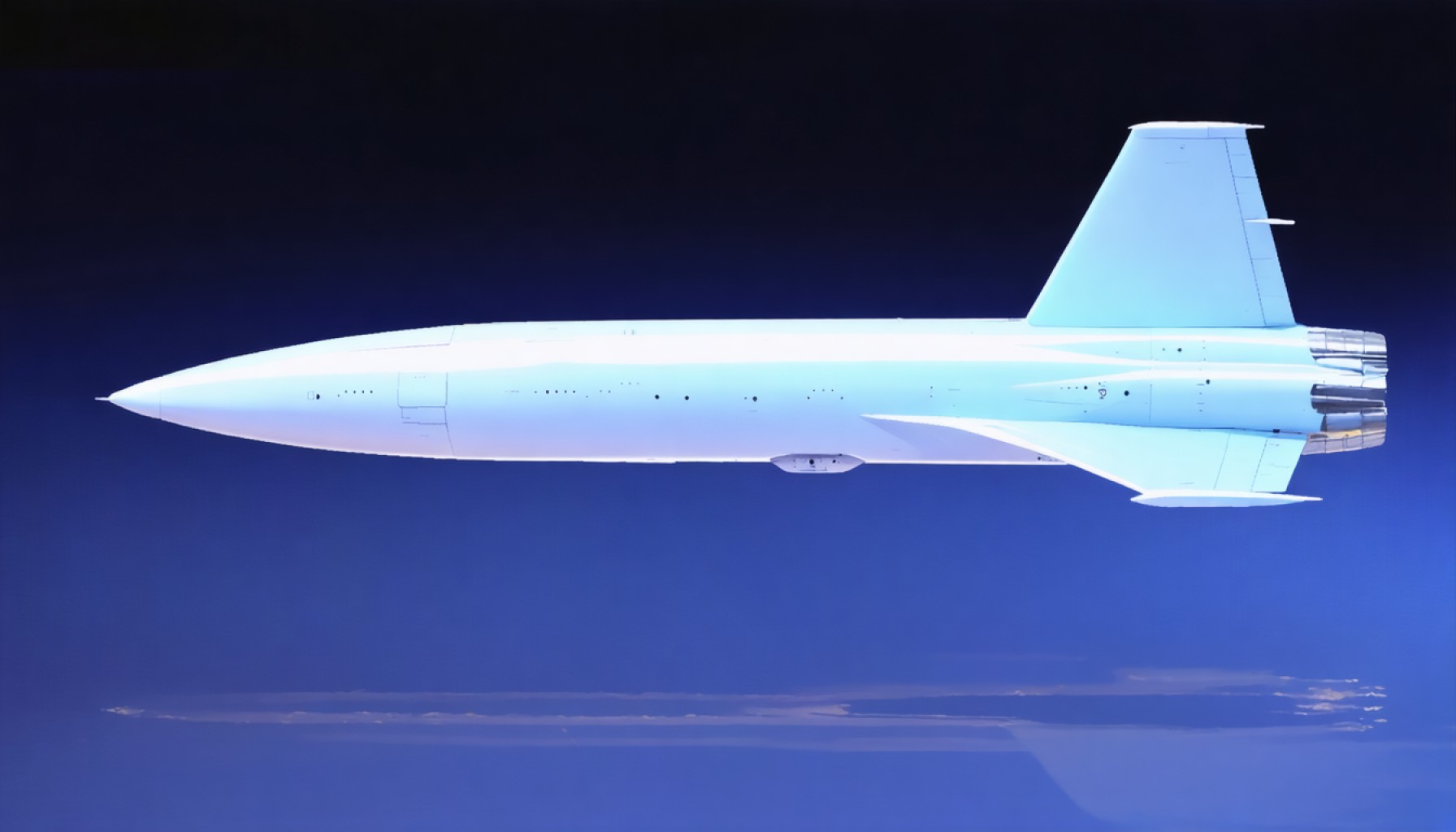- Hypersonic travel, defined as speeds over five times the speed of sound, is an emerging engineering frontier.
- University of Illinois Urbana-Champaign researchers, led by Professor Deborah Levin and Ph.D. student Irmak Taylan Karpuzcu, are advancing this field with groundbreaking 3D simulations.
- The Frontera supercomputer facilitates capturing complex air interactions around cone-shaped models, revealing previously unseen flow disturbances in shock layers.
- Advanced mathematical techniques, including linear stability analysis and Direct Simulation Monte Carlo methods, provide a deeper understanding of hypersonic flow behavior.
- This research could transform the design of safer, more efficient hypersonic vehicles, potentially revolutionizing transportation and commerce.
Hypersonic travel, once the realm of science fiction, is becoming an engineering frontier as vehicles cut through the sky at speeds over five times the speed of sound. But as these marvels of technology hurtle forward, the atmosphere becomes a battlefield of forces, with air molecules bombarding surfaces like an invisible artillery.
At the University of Illinois Urbana-Champaign, researchers are pioneering a new perspective on this turbulent domain. Under the leadership of Professor Deborah Levin, with Ph.D. student Irmak Taylan Karpuzcu taking the helm, they have shattered past limitations with groundbreaking 3D simulations. Before this, our view was limited—like trying to grasp a symphony with just one note. Now, the team uses the massive processing power of the Frontera supercomputer to capture the dance of air around cone-shaped models, a foundational step for more complex vehicles.
These 3D simulations unearthed a surprise: conventional wisdom suggested a neat, concentric swirl around cones, but here, disturbances appeared, unexpected disruptions fracturing the flow within shock layers. Such anomalies weren’t visible with slower speeds or simpler models, shedding light on the importance of velocity in these phenomena.
In the pursuit of understanding, the team deployed advanced mathematical weaponry. Using linear stability analysis underpinned by triple-deck theory, they decoded the cryptic behavior of the flow. This wasn’t just an academic exercise—the findings were solidified through Direct Simulation Monte Carlo methods, which track billions of particles with a precision and scale unmatched by traditional techniques.
What emerges is a new lens through which to view hypersonic travel. This deeper understanding furnishes engineers with the knowledge to craft safer and more efficient vehicles, potentially transforming how we think about transportation in the 21st century.
By bringing the unseen into view, this research holds promise not just for those in the lab, but for the future of travel and commerce. As we stand on the brink of a new era in flight, these revelations remind us that the skies hold mysteries waiting to be uncovered, with each discovery pushing the boundaries of what’s possible.
Unveiling the Future of Hypersonic Travel: What You Need to Know
Expanding the Frontiers of Hypersonic Travel
Hypersonic travel, which once seemed like a far-off dream from science fiction, is fast becoming a reality. Defined as travel at speeds exceeding Mach 5 (five times the speed of sound), hypersonic travel promises to revolutionize transportation and commerce. At the forefront of this development are researchers from the University of Illinois Urbana-Champaign, led by Professor Deborah Levin and Ph.D. student Irmak Taylan Karpuzcu. Their recent breakthrough using 3D simulations has provided unprecedented insights into hypersonic aerodynamics.
Key Discoveries and Their Implications
1. 3D Simulations and Shock Layer Disturbances:
– Using the computational might of the Frontera supercomputer, the team has visualized airflow around cone-shaped models as never before. Instead of the expected smooth airflow, they discovered unexpected disturbances in the shock layers at high speeds.
– This finding highlights the complexity of hypersonic flight dynamics and the critical role of velocity, demanding innovative design solutions for future vehicles.
2. Innovative Mathematical Analyses:
– The team employed linear stability analysis and triple-deck theory to make sense of these disturbances. Their research indicates that previous models, which often assume stable and predictable flow patterns, may be oversimplified.
– Direct Simulation Monte Carlo (DSMC) methods further validated their findings, offering accurate particle tracking on an unprecedented scale.
Real-World Implications
– Safety and Efficiency of Hypersonic Vehicles:
– These insights allow engineers to design safer and more efficient hypersonic vehicles by understanding and mitigating turbulent flow dynamics.
– Improved vehicle design can result in significant advancements in military applications, commercial travel, and even potentially cargo transport.
– Technological and Industrial Trends:
– The aerospace industry is observing a surge in investments into hypersonic technologies. Leading aerospace companies and governments are actively pursuing prototypes and commercial applications.
– As pointed out by experts, continuous research will be crucial to overcome remaining challenges related to materials and thermal management at extreme speeds.
Addressing Pressing Questions
What are the primary challenges of hypersonic travel?
– Extensive research is required to address challenges such as extreme heat management, material integrity at high speeds, and fuel efficiency.
When can we expect to see hypersonic travel become mainstream?
– While military applications are closer on the horizon, commercial hypersonic travel will likely take longer. Some projections suggest feasibility in the commercial sector within the next few decades.
Recommendations and Tips
– For Engineers: Stay abreast of the latest research and developments in computational fluid dynamics and materials science to anticipate technological shifts in hypersonics.
– For Students and Researchers: Consider specializing in aerospace engineering, focusing on hypersonic flows and advanced computing methods like Monte Carlo simulations.
Conclusion
Hypersonic travel stands poised to redefine transportation and technology in the 21st century. The University of Illinois Urbana-Champaign’s cutting-edge research offers a glimpse into what’s possible, encouraging continued exploration and innovation.
For further reading into the world of hypersonic innovation and engineering excellence, explore the University of Illinois Urbana-Champaign and more resources on hypersonic advancements.
